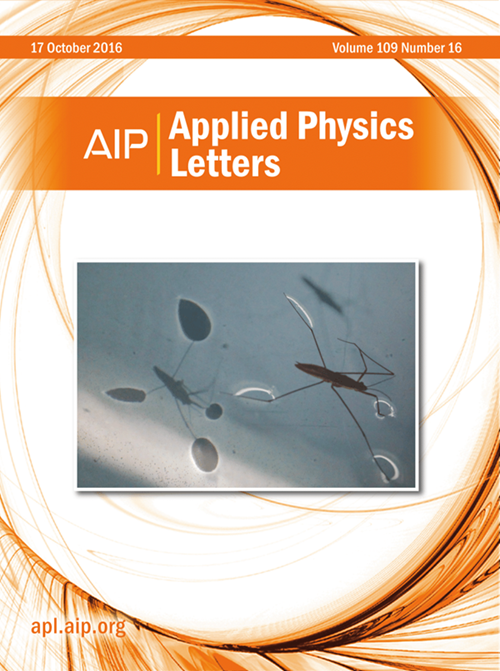Signature of metal–metal bonding in Ir–Ni–Ta–(B) bulk metallic glasses
IF 3.5
2区 物理与天体物理
Q2 PHYSICS, APPLIED
引用次数: 0
Abstract
In bulk metallic glasses, minimizing the total electronic energy is a key factor in glass formation. However, it remains unclear how this energy is minimized, particularly in metallic glasses made up of transition metal elements. In this study, we use synchrotron-based photoemission spectroscopy to investigate the electronic structure of Ir–Ni–Ta–(B) bulk metallic glasses, which are primarily composed of transition metals and have recently been discovered to exhibit exceptional glass-forming ability. We observe distinct chemical shifts in the core levels of Ir and Ta in opposite directions, while the Ni is close to an elemental-like state, suggesting significant Ir–Ta charge transfer and metal–metal bonding in the metallic glass phase. Additionally, a pseudogap at EF suggests an additional contribution from the itinerant electrons to the glass-forming ability, but likely playing a secondary role as it is only observed in Ir35Ni20Ta40B5. Our findings highlight the critical role of metal–metal bonding in facilitating the glass formation of metallic glasses composed of transition metals.在块状金属玻璃中,最大限度地降低总电子能量是玻璃形成的一个关键因素。然而,目前仍不清楚这种能量是如何最小化的,尤其是在由过渡金属元素组成的金属玻璃中。在本研究中,我们使用同步辐射光发射光谱来研究 Ir-Ni-Ta-(B)块状金属玻璃的电子结构。我们观察到 Ir 和 Ta 的核心电平在相反方向上发生了明显的化学位移,而 Ni 则接近于类元素态,这表明金属玻璃相中存在显著的 Ir-Ta 电荷转移和金属-金属键。此外,EF 处的伪缺口表明,巡回电子对玻璃形成能力有额外的贡献,但很可能只是次要作用,因为只有在 Ir35Ni20Ta40B5 中才能观察到。我们的研究结果突显了金属-金属键在促进由过渡金属组成的金属玻璃形成过程中的关键作用。
本文章由计算机程序翻译,如有差异,请以英文原文为准。
求助全文
约1分钟内获得全文
求助全文
来源期刊

Applied Physics Letters
物理-物理:应用
CiteScore
6.40
自引率
10.00%
发文量
1821
审稿时长
1.6 months
期刊介绍:
Applied Physics Letters (APL) features concise, up-to-date reports on significant new findings in applied physics. Emphasizing rapid dissemination of key data and new physical insights, APL offers prompt publication of new experimental and theoretical papers reporting applications of physics phenomena to all branches of science, engineering, and modern technology.
In addition to regular articles, the journal also publishes invited Fast Track, Perspectives, and in-depth Editorials which report on cutting-edge areas in applied physics.
APL Perspectives are forward-looking invited letters which highlight recent developments or discoveries. Emphasis is placed on very recent developments, potentially disruptive technologies, open questions and possible solutions. They also include a mini-roadmap detailing where the community should direct efforts in order for the phenomena to be viable for application and the challenges associated with meeting that performance threshold. Perspectives are characterized by personal viewpoints and opinions of recognized experts in the field.
Fast Track articles are invited original research articles that report results that are particularly novel and important or provide a significant advancement in an emerging field. Because of the urgency and scientific importance of the work, the peer review process is accelerated. If, during the review process, it becomes apparent that the paper does not meet the Fast Track criterion, it is returned to a normal track.
 求助内容:
求助内容: 应助结果提醒方式:
应助结果提醒方式:


